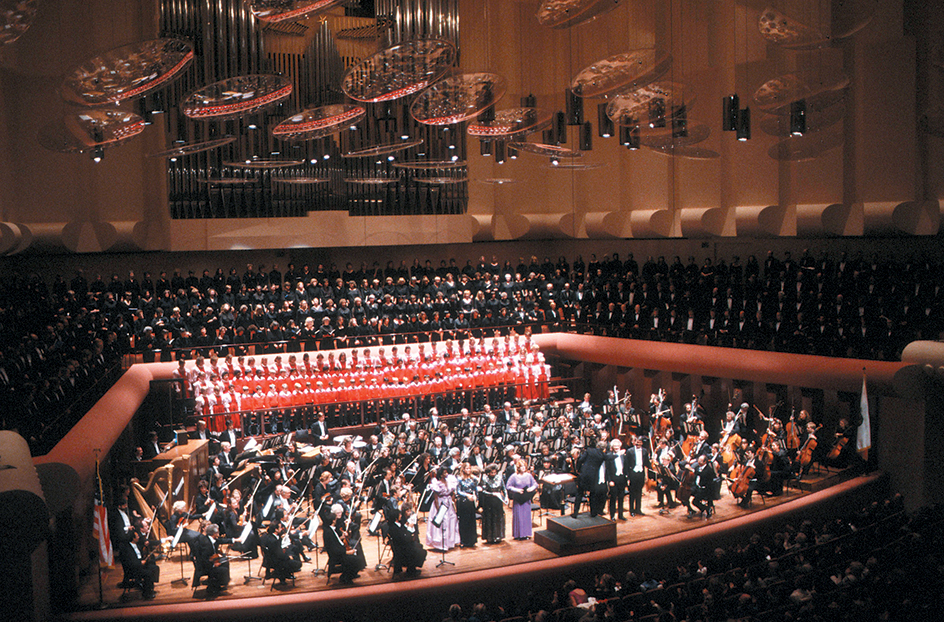Symphony is a large-scale musical composition for an orchestra. Symphonies are divided into sections called movements. Most symphonies consist of four movements, but some have only one and others have as many as six. The first movement of most symphonies is moderately fast. The second movement is the slowest, and the third has a dancelike quality. The fourth movement is a lively or triumphant conclusion.

Symphonies developed from the overtures of Italian operas of the early 1700’s. The Austrian composer Joseph Haydn wrote more than 100 symphonies in the late 1700’s, and they reflect the development of the symphony into a major musical form. The last four symphonies of the Austrian composer Wolfgang Amadeus Mozart, written in 1786 and 1788, are examples of especially elegant works called classical symphonies.
Many composers of the 1800’s and early 1900’s modeled their works after one or more symphonies by Ludwig van Beethoven of Germany. For example, Beethoven’s symphonies influenced such composers as Hector Berlioz of France; Franz Liszt of Hungary; Anton Bruckner, Gustav Mahler, and Franz Schubert of Austria; Felix Mendelssohn and Robert Schumann of Germany; and Jean Sibelius of Finland. The symphonies of Schumann influenced Johannes Brahms of Germany, Antonin Dvorak of what is now the Czech Republic, and Peter Ilich Tchaikovsky of Russia.
Loading the player...Symphony No. 5 by Beethoven
Leading symphony composers of the 1900’s include Sergei Prokofiev, Dimitri Shostakovich, and Igor Stravinsky of Russia; Aaron Copland and Charles Ives of the United States; Anton Webern of Austria; and Ralph Vaughan Williams of the United Kingdom.
Each composer discussed in this article has a biography in World Book. See also Minuet; Orchestra; Sonata.
